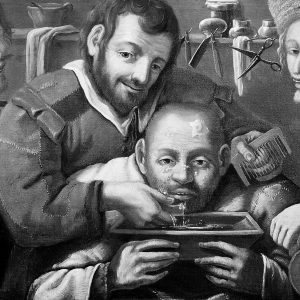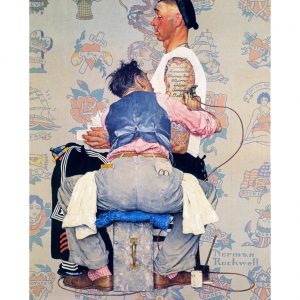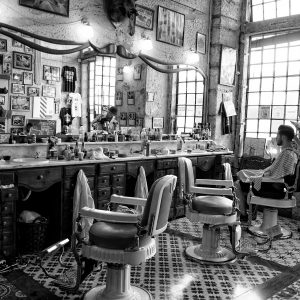Barbers, Beards And Tattoos – Modern And Historical Ties
It is no secret that many modern barbers enjoy a good show of ink. Beards, grooming and tattoos seem to go hand in hand – and for good aestethic reasons, we’d say. While it may seem that the barber and tattoos connection is something that has come into play with the rise of the beard as a mainstream facial feature (compared, say, to the most often clean shaven features of the 1960s), the relationship actually have links much further back than that.
Ancient practices
Of course, the association is not difficult to see. Both hairstyle, beardstyle, and body art are external expressions of a person’s identity. The two practices also go way back in time historically.
According to the American National Barber Museum, barbering services were performed for Egyptian nobility as far back as 5,000 BC. Tools were usually made from sharpened flint or oyster shells.
The profession of a barber, or rather, the task that a barber would have been expected to perform, has taken on several iterations over the years since. They were relied on for surgical duties of sorts, including bloodletting and other medical procedures.
In fact, the appearance of the classical barber pole with its red, white and blue rotating stripes is, according to the History Channel, linked to the bloodletting procedure, with red representing blood and white representing the bandages used to stem the bleeding.

Surgically prepared
The barber-surgeons would also take on other tasks that medical proofessionals deemed beneath them, such as pulling teeth, setting bones, and treating wounds. In fact, 16th-century Frenchman Ambroise Pare, who is considered the father of modern surgery, began his career as a barber-surgeon.
Barbers would also travel on ships along with soldiers, seamen and other explorers, where there nack for mending and healing smaller lesions will have been highly appreciated. We also know that it was on these journeys that sailors came in contact with the tattooing traditions in other parts of the world.
If they didn’t bring home a few as souvenirs from indigenous tribes, they managed to find ways of getting inked back home, evolving into the classical sailor tattoo style that kicked off the West’s fascination with the practice.

Rockwell’s Skin Deep
And here, it is easy to see the link where barbers went from barber-surgeons to also being barber-tattooers. All of the above require sterile and sharp tools as equipment. There is a painting by the artist Norman Rockwell from 1944 called Tattoo Artist (Only Skin Deep) where a man, who can be identified as a barber from the tools he carries in his pockets, is tattooing a sailor who is having, yet another girl’s name crossed out on his arm only to add another underneath. Apparently, he hadn’t heard of the curse that comes with tattooing your significant other’s name.

Barbers first tattoo studios
Indeed, barber shops also became the first tattoo parlours, and the subculture grew from there. So while barbers, beard and tattoos may have a direct aesthetic link today, their historical ties go a long way back. In fact, we might not even have tattooing as we know it today without the skill of the barber-surgeons leading the way.
